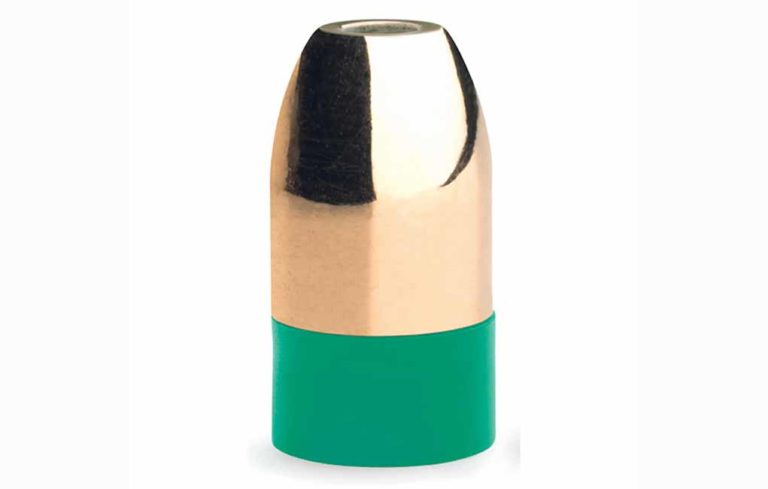
What's the best muzzleloader bullet to put meat on the table? That depends on the rifle you're shooting and the experience you're after.
Just like when it comes to the muzzleloader you choose to hunt with, be it traditional or modern, your choice of bullet is largely determined by your desired experience. If you find yourself with a traditional muzzleloader, you are limited to a certain class of muzzleloader bullet (ball). Likewise, with a modern in-line you’ll want to use the best possible projectile, which is going to be a special type of muzzleloader bullet utilizing a sabot.
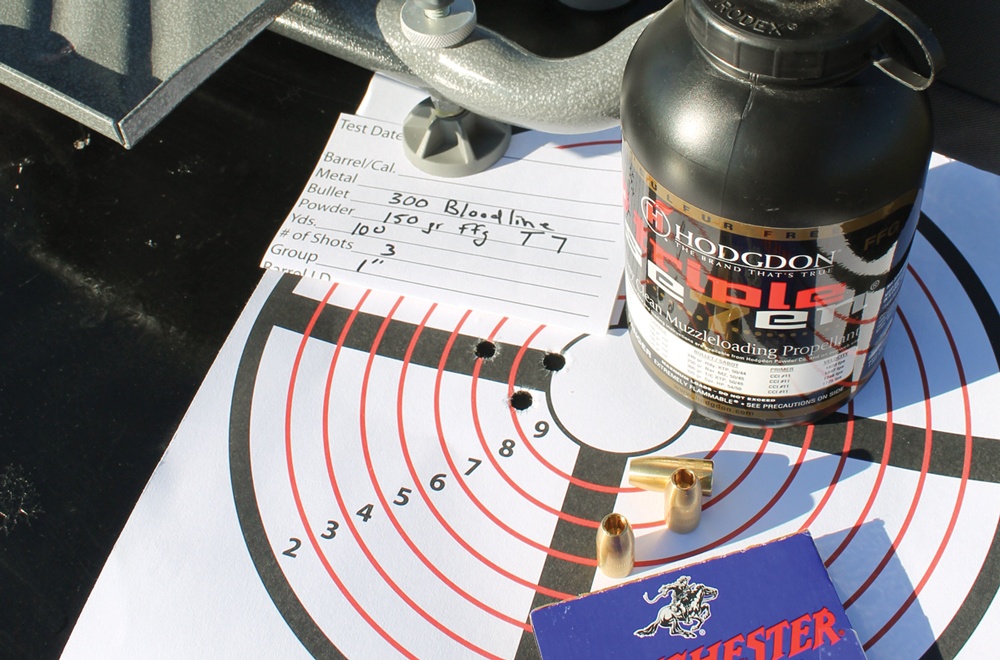
Traditional Muzzleloader Bullets
In general, there are not many options for traditional muzzleloaders. The classic lead ball is one of just two common and reliable options, the second being the Minié ball or its modern iteration, Thompson Center’s Maxi Ball.
Minié ball
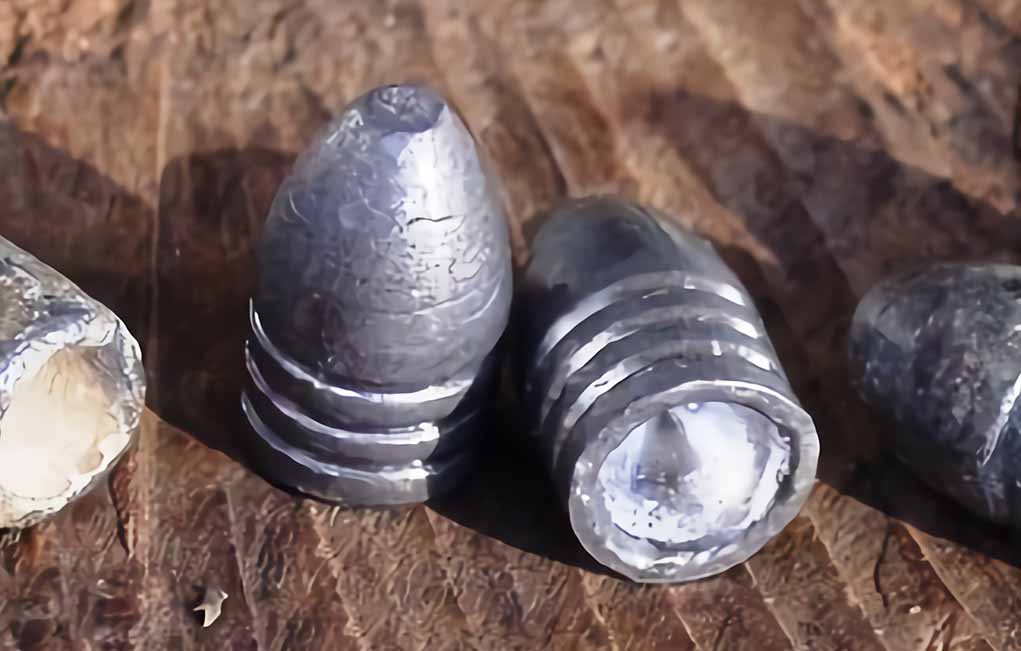
For those not in the know, the latter (Minié ball) is a soft, conical lead projectile with a hollow base that improves the ballistics compared to a traditional lead ball. However, the Minié is not compatible with every type of traditional gun, rather it is best in Civil War rifle-muskets like the Springfield 1861. It loads as easily as a smoothbore musket and, when the gun is fired, the Minié ball’s base expands into the rifling imparting spin. These are large bullets of .58 caliber in most cases and are tremendously lethal on game.
Maxi Ball

The more modern Maxi Ball is an option that offers increased killing power compared to a patched round ball. Among muzzleloader bullets, it is a wise choice for hunters who want a fast reload, respectable accuracy and greater mass. The bullet differs from its predecessor (Minié) in that it has deep lubricant grooves on the bearing surface. Additionally, it is made wider than the bore and when ramming it in place you engrave the rifling into it. It takes considerably less effort to seat a Maxi Ball once you start it as opposed to a patched ball or sabot.
Lead Ball

Finally for the traditional muzzleloader marksman, there is the patched round ball, what could be thought of as the original muzzleloader bullet. The lead ball is undersized to the bore and requires a fabric patch around it to hold it in place and engage the rifling. There are variations in doing this, and you’ll need to experiment with various diameters of ball and thickness of patch for you particular rifle. A good example of this would be in a .45 caliber muzzleloader using a .440” round ball with a .02” patch. In this case, the combination should provide a grip on the ball and holds it in place against the powder charge until firing.
Modern Muzzleloader Bullets
When it comes to modern in-lines, there are a variety of options. Muzzleloader bullets in this case aren’t necessarily muzzleloader-specific. A modern .50 caliber in-line can load a .50 caliber patched ball, but won’t be getting your money’s worth out of the gun doing so. A sabot load in the same gun, however, is a different story.
Saboted Bullets
For a .50 cal., such a load would consist of a .452 bullet seated in a plastic cup called a sabot. The sabot could be thought of as a modern equivalent of the old cloth patch. The sabot itself is what grips the rifling, not the bullet. In point of fact, you can use almost any .452 caliber bullet in modern .50-caliber in-line, including those meant for the .45 Colt, .460 S&W, and even.450 Bushmaster. For hunters who desire deep penetration in game, you can also load hard cast .452 Keith bullets so long as you don’t deform the meplat on loading.
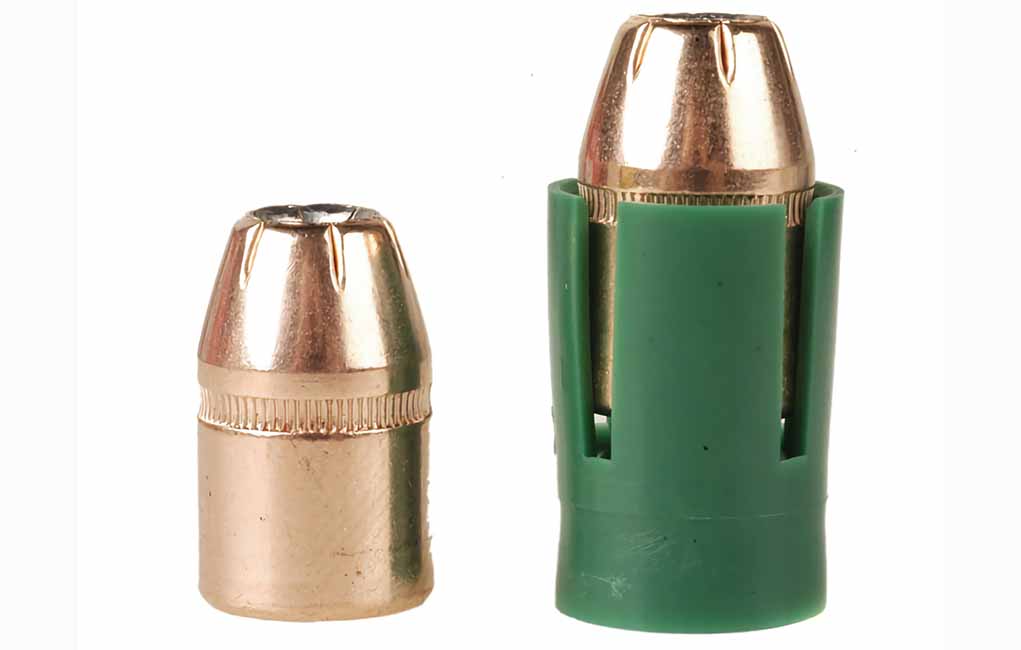
Modern sabots often come with the bullet, powder, and sabot all assembled and ready to load. These are a general option and may not be the best for your rifle. As far as muzzleloader bullets go they will get the job done, though perhaps not as accurately as a tuned load. A note on these kit-style loads, they are often expensive and not especially tough. It is common to see these types of bullets sporting a polymer tip and thin jackets around a soft lead core. Consider these a stopgap solution, similar to candy bars at the checkout line. Many hunters with a modern inline mindlessly grab these off the shelf, paying no attention to what may be a better option for their rifle. But in all fairness, in the heat of hunting season, there is something to be said about having reliable off-the-shelf options.
If accuracy at longer ranges is your desire, you’ll want to spend some time tuning your powder charge and bullet style, buying individual components until you find the best combination for you muzzleloader.
Notable Muzzleloader Bullets
Barnes Expander MZ

These muzzleloader bullets by Barnes are extremely tough and very accurate and reliable in modern muzzleloaders. They are made entirely of copper and offer rapid expansion. Being copper they hold their shape better than soft lead when seating, and are effective at both close and long ranges. Barnes makes these in several calibers, and all are a solid choice. They come in a pack of 15 bullets with sabots and carry an MSRP of $28.99.
Hornady Lead Round Balls

If you’re angling for traditional rifles, the Hornady round ball is a top-shelf choice. Available in diameters of .32 caliber though .58 caliber, they are useful on all manner of game and in a wide range of muzzleloading guns. This includes cap-and-ball revolvers. These balls are a good place to start what is likely going to be a long journey in learning about muzzleloader bullets, and luckily are inexpensive enough to play around a bit. They retail around $11-18 per hundred and around $13 per 50 in .58 caliber.
Powerbelt Bullets
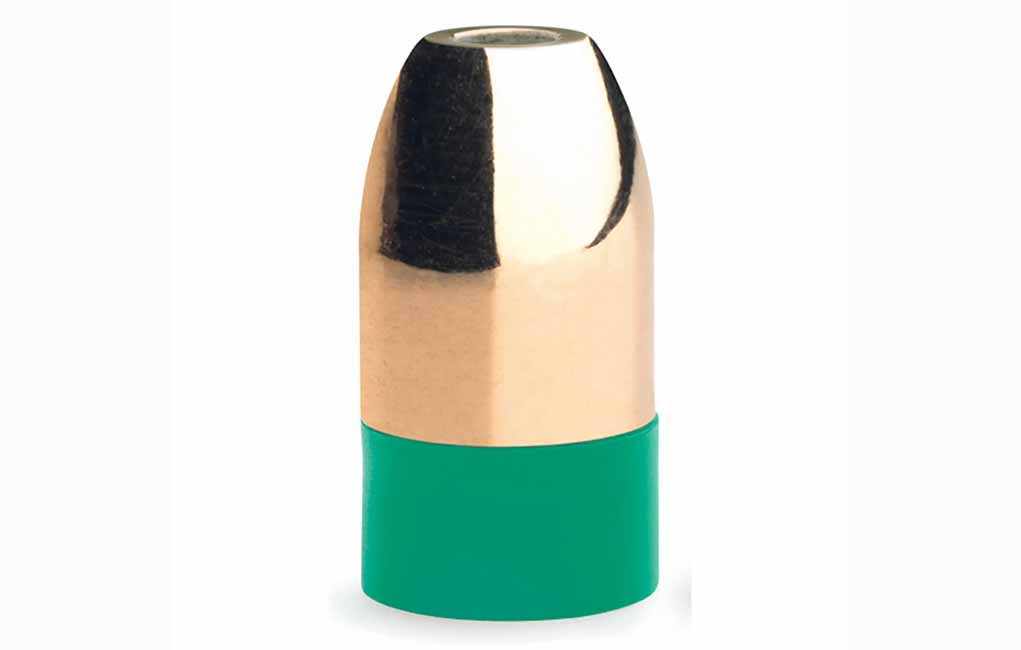
There is a wide range of offerings in the Powerbelt lineup. These unique bullets feature an integrated skirt that acts in much the same way as the Minié ball’s hollow base. If you want the most long-range performance with best-in-class ballistics, this brand of bullets will get you there. The company boasts an impressive .45 caliber ELR muzzleloader-specific bullet that advertises just a bit over a foot of drop at 300 yards from a 200 yard zero. Very impressive. Prices vary on this brand, but the MSRP on the .45 caliber ELR bullets is $34 per pack of 15.
More On Muzzleloaders:
- Muzzleloader Open Sights Upgrade
- The Modern MOA Muzzleloader
- The Lost Art Of Shooting Cap-And-Ball Revolvers

Next Step: Get your FREE Printable Target Pack
Enhance your shooting precision with our 62 MOA Targets, perfect for rifles and handguns. Crafted in collaboration with Storm Tactical for accuracy and versatility.
Subscribe to the Gun Digest email newsletter and get your downloadable target pack sent straight to your inbox. Stay updated with the latest firearms info in the industry.

![Best Concealed Carry Guns In 2025 [Field Tested] Wilson Combat EDC X9S 1](https://gundigest.com/wp-content/uploads/Wilson-Combat-EDC-X9S-1-324x160.jpg)


![Best 9mm Carbine: Affordable PCCs [Tested] Ruger Carbine Shooting](https://gundigest.com/wp-content/uploads/Ruger-Carbine-Shooting-100x70.jpg)
![Best AR-15: Top Options Available Today [Field Tested] Harrington and Richardson PSA XM177E2 feature](https://gundigest.com/wp-content/uploads/Harrington-and-Richardson-PSA-XM177E2-feature-100x70.jpg)

You seem to have a typographical error. Patch thickness can be 0.02 inches, but I’ve never heard of nor seen 0.002 inch thick patches. https://www.trackofthewolf.com/List/Item.aspx/163/1
Thank you for catching that typo, it’s been corrected.
I HAVE BEEN I BLACK POWER FOR 50 YR. LOVE IT FROM 44 45,PISTOLS 50 TO 58, MAKE BALLS FOR EACH ONE, TEACH IDAHO FISH GAME HUNTER ED.. SHOT 500YRD. MY WIFE ALSO LIVES SHOOTING TO
PEOPLE CAN NOT BELIEVE WHAT YOU CAN DO WITH THESE AND THE POWER THEY HAVE.
MY 58 LYMAN VERY ACCURATE AT THE POWER SHOOTS SURPRISE HOW IT SHOOTS. HAVE WON TURKEY CHICKEN HAM, BACON AT THE SHOOTS . HUNT WITH BLACK POWER 52 YR. IN IDAHO YOU HAVE TO USE LEAD ONLY FOR GAME.
USE BLACK POWER AND TRIPLE X IF I AM GOING TO A WEEK TIME HUNT AS YOU DO NOT HAVE TO EMPTY GUN .AFTER THE DAY AS BLACK POWER MORE HANDY TO USE GREAT ARTICLE BOB